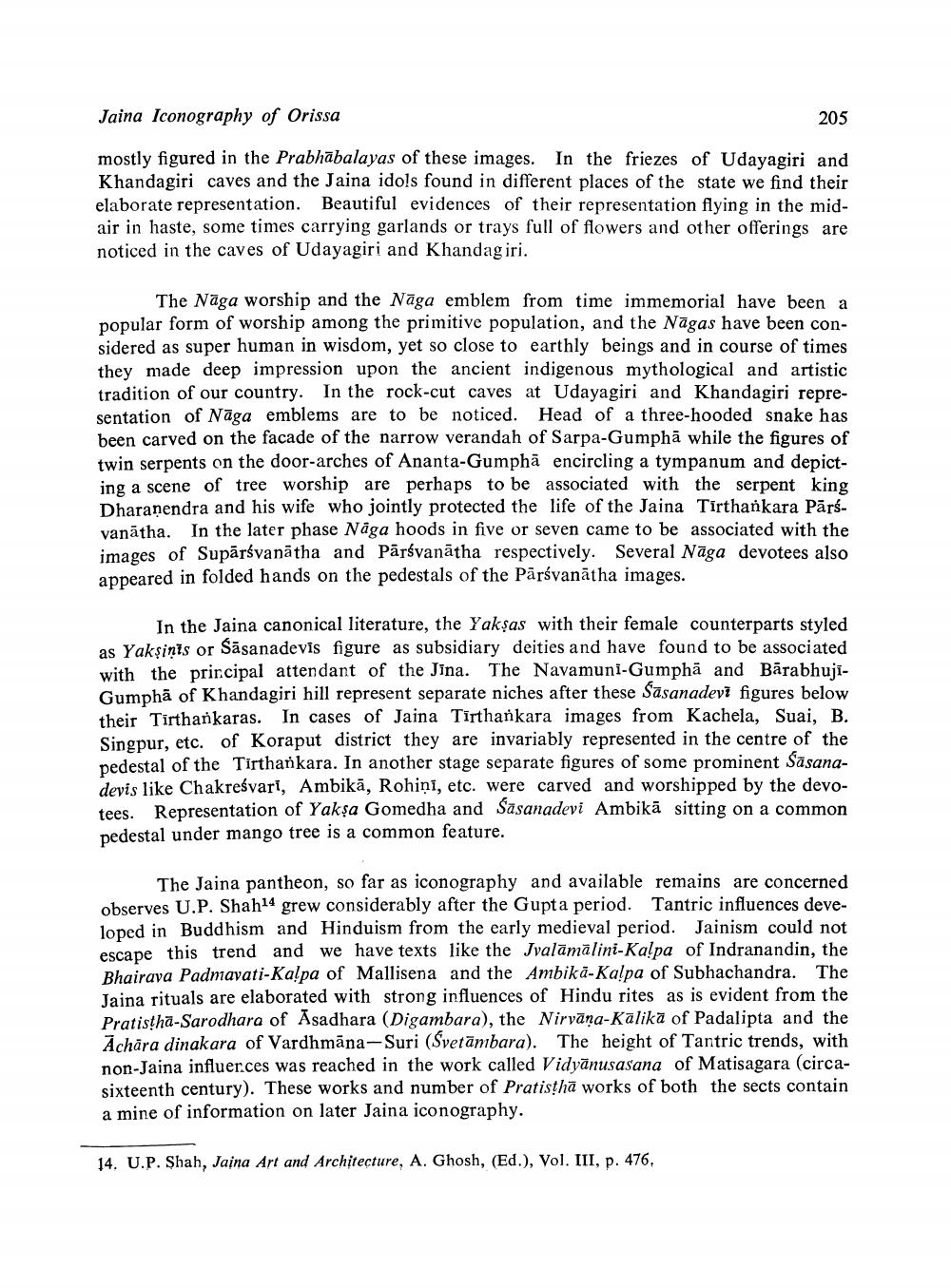________________
Jaina Iconography of Orissa
205
mostly figured in the Prabhābalayas of these images. In the friezes of Udayagiri and Khandagiri caves and the Jaina idols found in different places of the state we find their elaborate representation. Beautiful evidences of their representation flying in the midair in haste, some times carrying garlands or trays full of flowers and other offerings are noticed in the caves of Udayagiri and Khandagiri.
The Nāga worship and the Nāga emblem from time immemorial have been a popular form of worship among the primitive population, and the Nāgas have been considered as super human in wisdom, yet so close to earthly beings and in course of times they made deep impression upon the ancient indigenous mythological and artistic tradition of our country. In the rock-cut caves at Udayagiri and Khandagiri representation of Nāga emblems are to be noticed. Head of a three-hooded snake has been carved on the facade of the narrow verandah of Sarpa-Gumphā while the figures of twin serpents on the door-arches of Ananta-Gumphā encircling a tympanum and depicting a scene of tree worship are perhaps to be associated with the serpent king Dharanendra and his wife who jointly protected the life of the Jaina Tirthankara Pārsvanātha. In the later phase Näga hoods in five or seven came to be associated with the images of Supārsvanātha and Pārsvanātha respectively. Several Nāga devotees also appeared in folded hands on the pedestals of the Pārsvanātha images.
In the Jaina canonical literature, the Yakşas with their female counterparts styled as Yakşinis or Sāsanadevis figure as subsidiary deities and have found to be associated with the principal attendant of the Jina. The Navamuni-Gumpha and BārabhujiGumphā of Khandagiri hill represent separate niches after these Sasanadevi figures below their Tirthankaras. In cases of Jaina Tirthankara images from Kachela, Suai. B. Singpur, etc. of Koraput district they are invariably represented in the centre of the pedestal of the Tirthankara. In another stage separate figures of some prominent Säsanadevis like Chakreśvari, Ambikā, Rohini, etc. were carved and worshipped by the devotees. Representation of Yakşa Gomedha and Sasanadevi Ambikā sitting on a common pedestal under mango tree is a common feature.
The Jaina pantheon, so far as iconography and available remains are concerned observes U.P. Shah14 grew considerably after the Gupta period. Tantric influences developed in Buddhism and Hinduism from the early medieval period. Jainism could not escape this trend and we have texts like the Jvalāmālini-Kalpa of Indranandin, the Bhairava Padmavati-Kalpa of Mallisena and the Ambika-Kalpa of Subhachandra. The Jaina rituals are elaborated with strong influences of Hindu rites as is evident from the Pratistha-Sarodhara of Asadhara (Digambara), the Nirvana-Kālikā of Padalipta and the Achāra dinakara of Vardhmāna-Suri (Svetāmbara). The height of Tantric trends, with non-Jaina influer.ces was reached in the work called Vidyānusasana of Matisagara (circasixteenth century). These works and number of Pratisthā works of both the sects contain a mine of information on later Jaina iconography.
14. U.P. Shah, Jaina Art and Architecture, A. Ghosh, (Ed.), Vol. III, p. 476.




